The 100,000
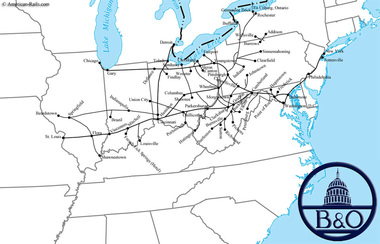
The Great Railroad Strike of 1877 was the first nationwide strike of workers in the United States. It began in Martinsburg, West Virginia on July 14, 1877 when 40 furious locomotive firemen who worked for the Baltimore and Ohio (B&O) Railroad line walked off the job because the owners cut their pay. Over one hundred thousand railway workers across 14 states followed them. The strike stopped over half of the nation's railroads. Products could not be transported and the majority of the nation's business was brought to a halt.
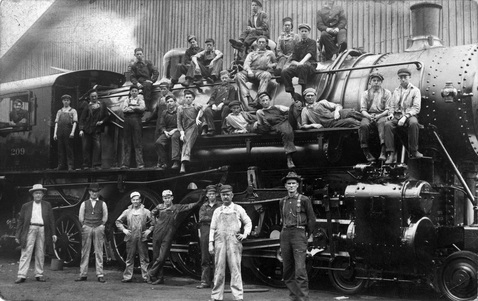
The nation was going through an economic depression and industrialists were looking for ways to cut costs and save money. Many industrialists chose to cut workers' pay to keep their businesses going during the depression. People during the time did not support the strike. They felt that railroad workers were overreacting and looking for a reason to rebel and cause trouble. The truth was that these workers had every right to be angry. Industrialists, banks, and government officials all had worked together to help each other out at the workers' expense. Workers endured dangerous and unsanitary working conditions. They worked long hours, doing hard, manual labor, for very low pay so that industrialists could make money. This was already bad enough. When the B&O Railroad cut pay on top of all this, workers were outraged. Workers banned together and held a nationwide railroad strike that turned violent.
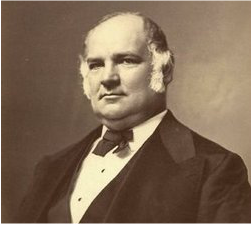 John W. Garrett - President of the B&O Railroad in 1877
John W. Garrett - President of the B&O Railroad in 1877
In Baltimore, railroad workers stopped freight trains but allowed passenger trains to pass. The Governor sent armed state militia to stop the barricade. The militia ended up opening fire into the protests, killing ten people. The event enraged the rioters even more. News of the shootings spread and over 14,000 workers joined the protests. The violence grew. Passenger cars were set on fire and railroad workers crashed a train into a line of freight cars. On July 19th, President Rutherford B. Hayes sent Federal troops to stop the rioting armed with Gatling guns and Springfield rifles. The workers were no match against armed federal troops and were forced to end the rioting and strikes.
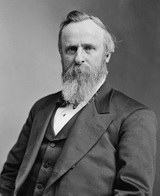 Rutherford B. Hayes
Rutherford B. Hayes
In Cumberland, Maryland, strikers stopped passenger and freight traffic. When the governor sent out the militia, fights broke out in the streets between protesters and militia. Rioters started fires and destroyed property. The militia fired on the mob. They killed 10 strikers and injured 25 more. When news of the incidents reached Washington, President Rutherford B. Hayes sent federal troops to restore order.
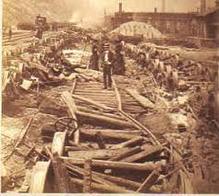
Pittsburgh, Pennsylvania had some of the most violent incidents. Rioters started fires. They destroyed and burned down buildings and destroyed over 100 locomotives and 1000 passenger and freight cars. They threw stones and attacked the militia. The militia in return began shooting and bayoneting the rioters. 20 strikers were killed and 29 were injured during the course of the rioting.
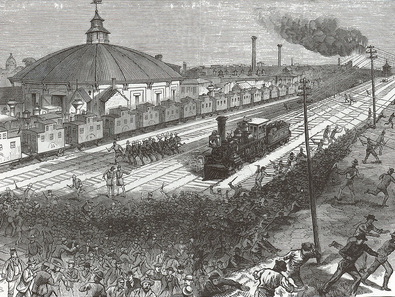
Similar events happened in major cities all over the United States. In Reading, Pennsylvania 10 people were killed by the Pennsylvania State Militia. In Chicago, Illinois, large mobs of rioters protested causing massive damage to the city. They were joined by a group of striking coal miners, called the Molly Maguires. The Workingmen's Party of the United States held demonstrations that drew vast crowds. The newspapers called the protests a "Reign of Terror" which scared the American public and turned them against strikers.
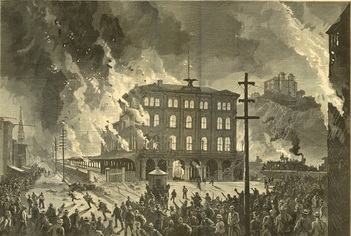
State militia, police, and vigilante lawmen all fought the strikers using any means necessary and eventually squashed all the strikes and riots. Though the strike was largely unsuccessful, they did bring awareness to the working conditions and mistreatment that workers in industries faced. It also inspired the rise of labor unions and motivated people to work for workplace reform. These minor successes were at a great cost. Hundreds of people were injured and over 100 people died in the riots. More than 1000 people were jailed during the strike. It is estimated that $5 million of property was damaged or destroyed in the rioting.